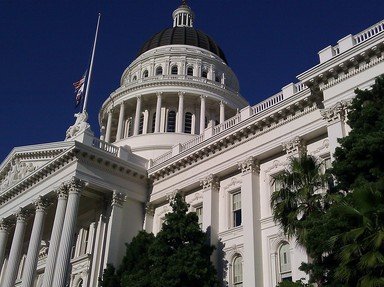Quiz Answer Key and Fun Facts
1. Salmon P. Chase was born in Cornish, New Hampshire in 1808. Because his father died when he was nine years old, he was raised by his uncle, an Episcopal Bishop. He proved to be an apt student and eventually entered Dartmouth College. Upon completion at Dartmouth, he went on to study in what city to become an attorney?
2. A spiritual renewal inspired Chase to make a strong commitment to abolitionism: the banning of slavery from the US. He then became well known for legally defending fugitive slaves in Ohio; he even argued on their behalf before the US Supreme Court.
Although Chase at first aligned himself with the Whig party, he soon switched his political affiliation to become a leader in what party?
3. In 1849, Chase was elected a Free Soil US senator from Ohio. It was in the US senate that he spoke out with great passion against slavery. Unfortunately, Chase encountered much opposition to his progressive opinions on human dignity. What was the one senate act that Chase vehemently opposed but passed regardless?
4. As the once powerful Whig party was clearly dying, Salmon P. Chase saw an opportunity to unite various political factions on a platform to oppose all slavery in the USA. He helped to author "The Appeal of the Independent Democrats in Congress to the People of the United States" in 'the New York Times' on January 24, 1854. Today, this writing is considered to be the first expression of the principles of which political party?
5. In 1860, eager to be the president, Chase tried to win his party's nomination. However, due to the political resentments of others, he was unable to find much support outside of his home state of Ohio. Chase then gave his endorsement to Abraham Lincoln. After winning the general election, Lincoln returned this political favor to Chase by appointing him to be what?
6. As a member of Lincoln's cabinet, Chase oversaw the creation of a US national banking system. He was also able to create for the US its first own what?
7. To honor Salmon P. Chase for his work, particularly in Lincoln's cabinet, what modern large denomination US note does his portrait appear on?
8. As 1864 approached, Chase decided to run again for president so he resigned from Lincoln's cabinet. Lincoln still saw great value in Chase's ability to serve the USA and, after the death of Chief Justice Roger Taney, Lincoln nominated Salmon P. Chase to replace him. Soon, after his confirmation, Chief Justice Chase made what radical move?
9. Salmon P. Chase was the first Chief Justice to preside over an impeachment trial of a US president. President Andrew Johnson had fought with many "Radical Republicans" in Congress over Reconstruction. Johnson eventually fired the Secretary of War: Edwin Stanton, who was also a "Radical Republican."
Stanton's many allies in the House accused Johnson of violating the Tenure of Office Act by dismissing Stanton. The House impeached Johnson by a large margin and instructed the Senate to begin their trial of him. After a month-long trial, Johnson was acquitted by a margin of how many votes?
10. Chief Justice Chase unsuccessfully sought (twice) to be nominated a US presidential candidate. Regardless of his inability to win the Office of the President, the service Chase gave to his nation was immeasurable. Salmon P. Chase died in 1873. Where is he buried?
Source: Author
star_gazer
This quiz was reviewed by FunTrivia editor
ladymacb29 before going online.
Any errors found in FunTrivia content are routinely corrected through our feedback system.

